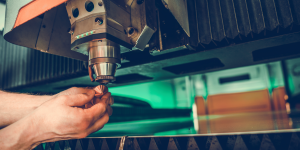Introduction
CNC machining is a process that utilizes computer programs to control the tools that can cut, etch, carve, and bend the desired material (metal, plastics, wood, etc. ) to arrive at the specific part or product required. The way the cutter operates on the material is referred to as a toolpath. As a CNC machinist, toolpaths are essential in determining the efficiency of the process and the quality of the final product. To elaborate, toolpath strategies are ways to work around CNC machines that can significantly increase efficiency once they are learned by the CNC machinists. The following are the essential guidelines that can be used to enhance CNC machining efficiency, with emphasis on the toolpath.
Simplify Geometry
This means that the higher the complexity of the part geometry, the higher the complexity of the tool paths used to create the part. It is beneficial to make the part geometries as simple as possible so that the tool paths can be efficiently designed and the machining time can be reduced.

Strategies include:
– Avoid sharp details, deep recesses, small radius fillets, etc., in the design of the parts.
– Employ 2. 5D characteristics instead of intricate 3D shapes in case
– Do not switch between different transition types, and do not change the level of the text.
Rough pass: In this pass, the coarse surface at the edges of the plate is removed, and the general flatness of the plate is established.
Roughing passes thereby clear out most of the metal with large depths of cuts and fast feed rates. The finishing passes are then followed by machining the part to the final size and required surface finish. This is more efficient than having slow passes attempting to achieve final specifications in one pass, for instance. Choose the appropriate feed rates/speeds for roughing and finishing operations.
Optimize Tool Selection
Selecting the right tool for roughing and finishing applications increases the metal removal rate on roughing. It gets the required surface finish on the finishing cut. More extensive tools, which can make deep cuts, should be employed for roughing. It is also possible to use smaller tools for tighter paths and fine cuts, which are used for finishing. Also, reduce the number of tool changes by employing cutting tools that can perform roughing and finishing operations.
HMM or High-Efficiency Milling Techniques
The HSM (high speed machining) and HEM (high efficiency machining) techniques are based on feed rates, speeds, and motions in order to maximize the metal removal rate and achieve the required surface finish. The ways of avoiding or minimizing tool breaking include the use of more comprehensive passes, the use of trochoidal tool paths, the use of contour tool paths, and not using the tool unnecessarily. This always puts the tool in active cutting mode or, instead, constantly removes material from the workpiece.
Linear and Circular Interpolation
CNC controls rely on linear and circular interpolation that enable the smooth control of the tool path to the programmed endpoints. Proper selection of lines and arcs in toolpaths results in smooth cutting action as well as with the help of acceleration control. It is therefore recommended that one should not use many short line segments on the same drawing.
Directional Toolpaths
The orientation of the tool path can affect the positional precision, surface texture, and production time. Generally, circumventing paths against the cutter rotation, which buck the cutting forces, should be prevented. Climb milling and hybrid milling techniques, thus, have certain advantages over the conventional path.

Customize Feeds and Speeds
Selecting the default or even the safer conservative settings will undoubtedly leave a lot of potential for optimization on the table. Frequently changing feed rates and spindle speed for the tool, pass, and material can result in significantly increased metal removal rates without compromising the surface finish. This demands focus on the quantity of chips, the strength of machines, and the quality of finishes.
Conclusion
There are virtually near-infinite ways CNC machinists can apply to enhance machining productivity with effective tool path management. They include simplification, roughing and finishing, proper tool selection, HSM/HEM, and modifying process parameters, which enable the operators to reduce the cycle time and improve the quality of the parts. That is why it is essential to keep on learning and experimenting in a bid to discover other forms of efficiency.
